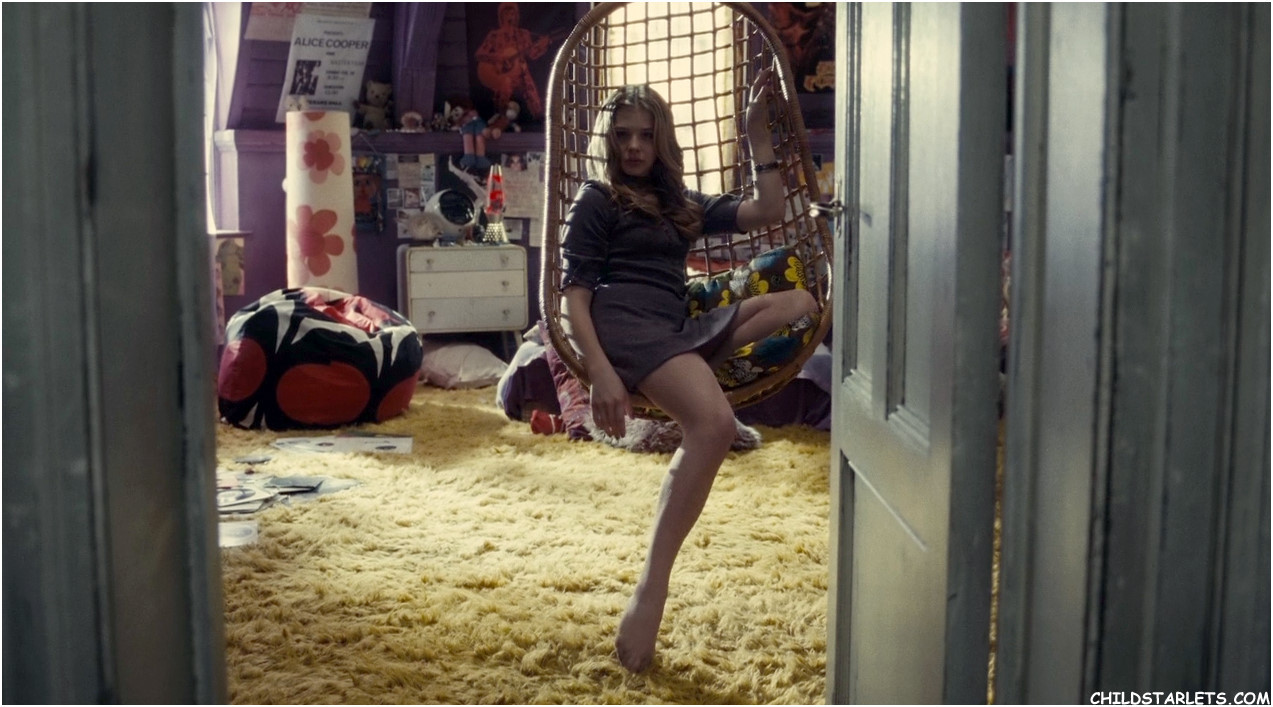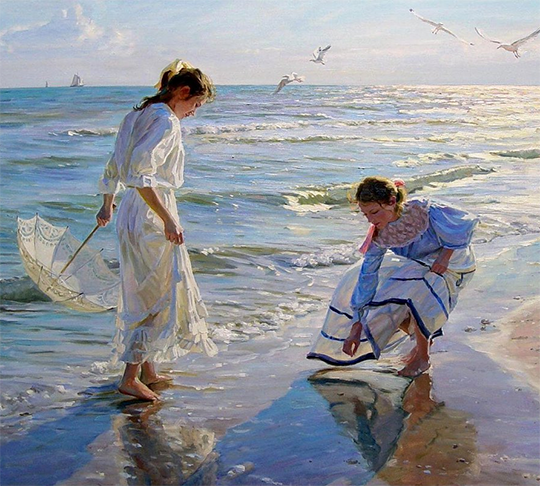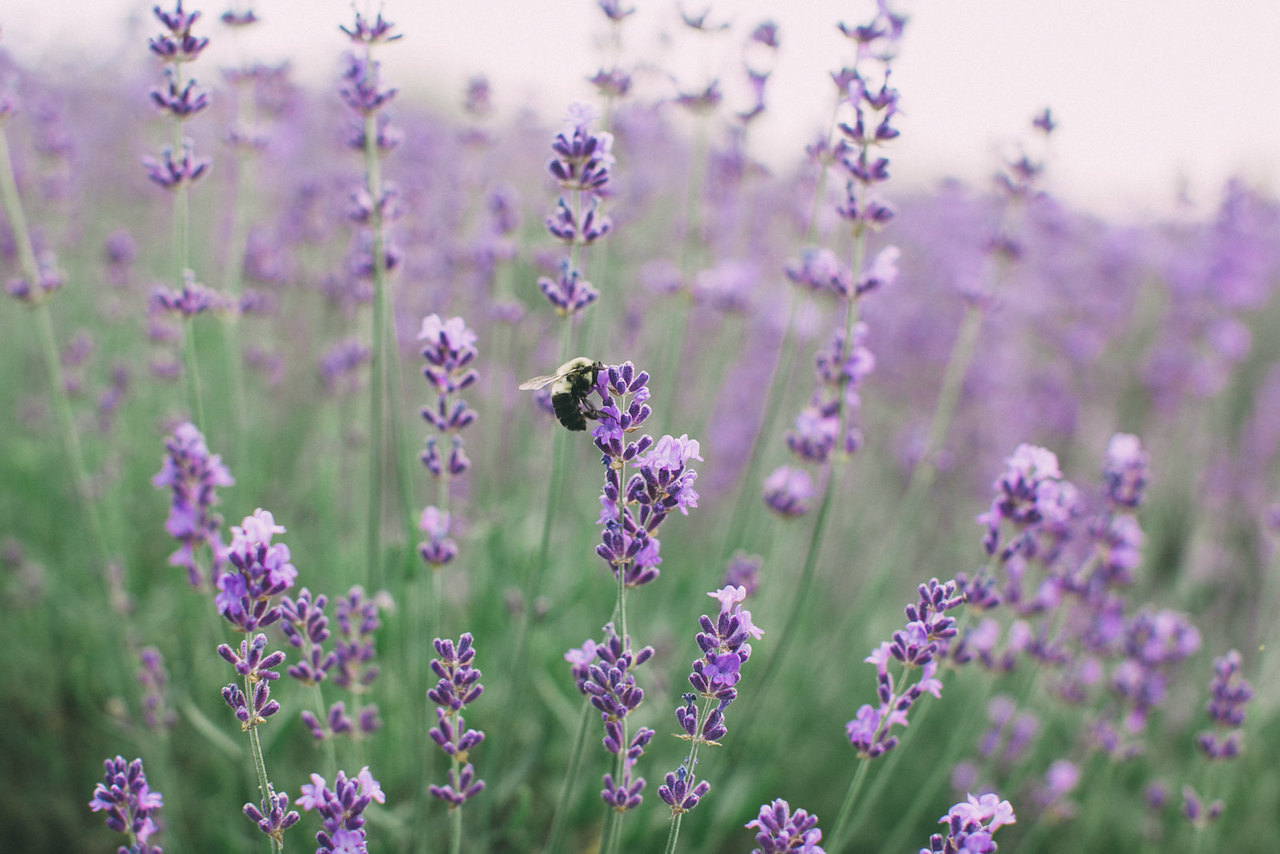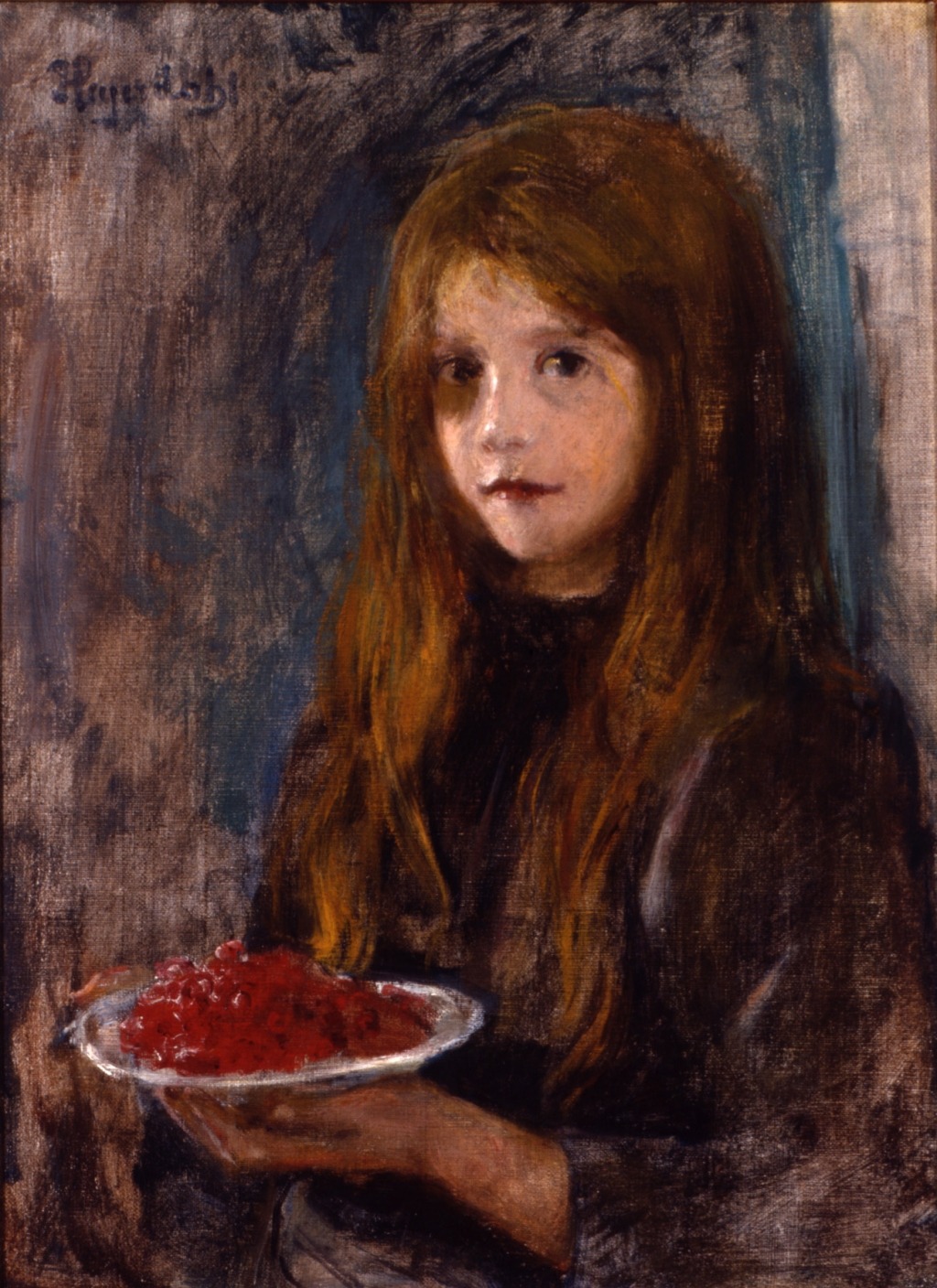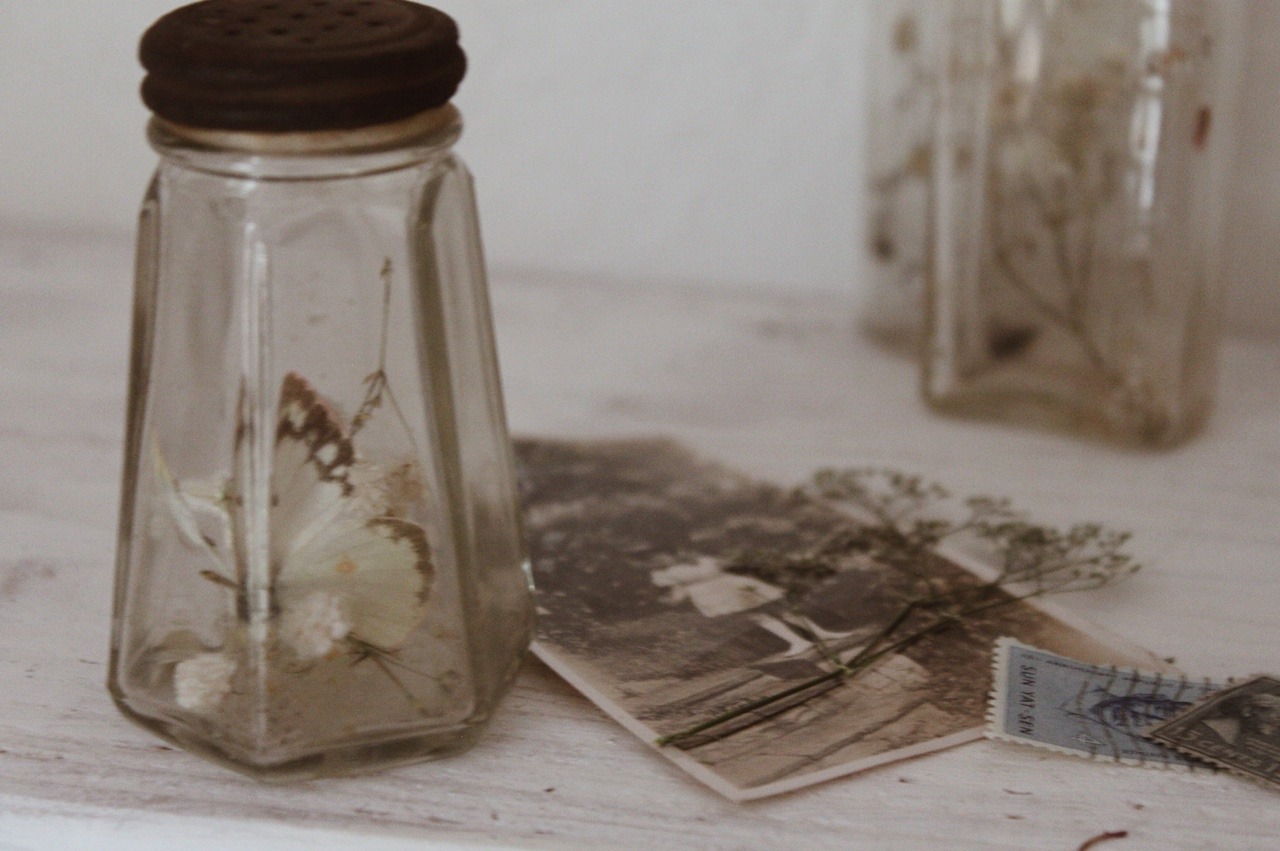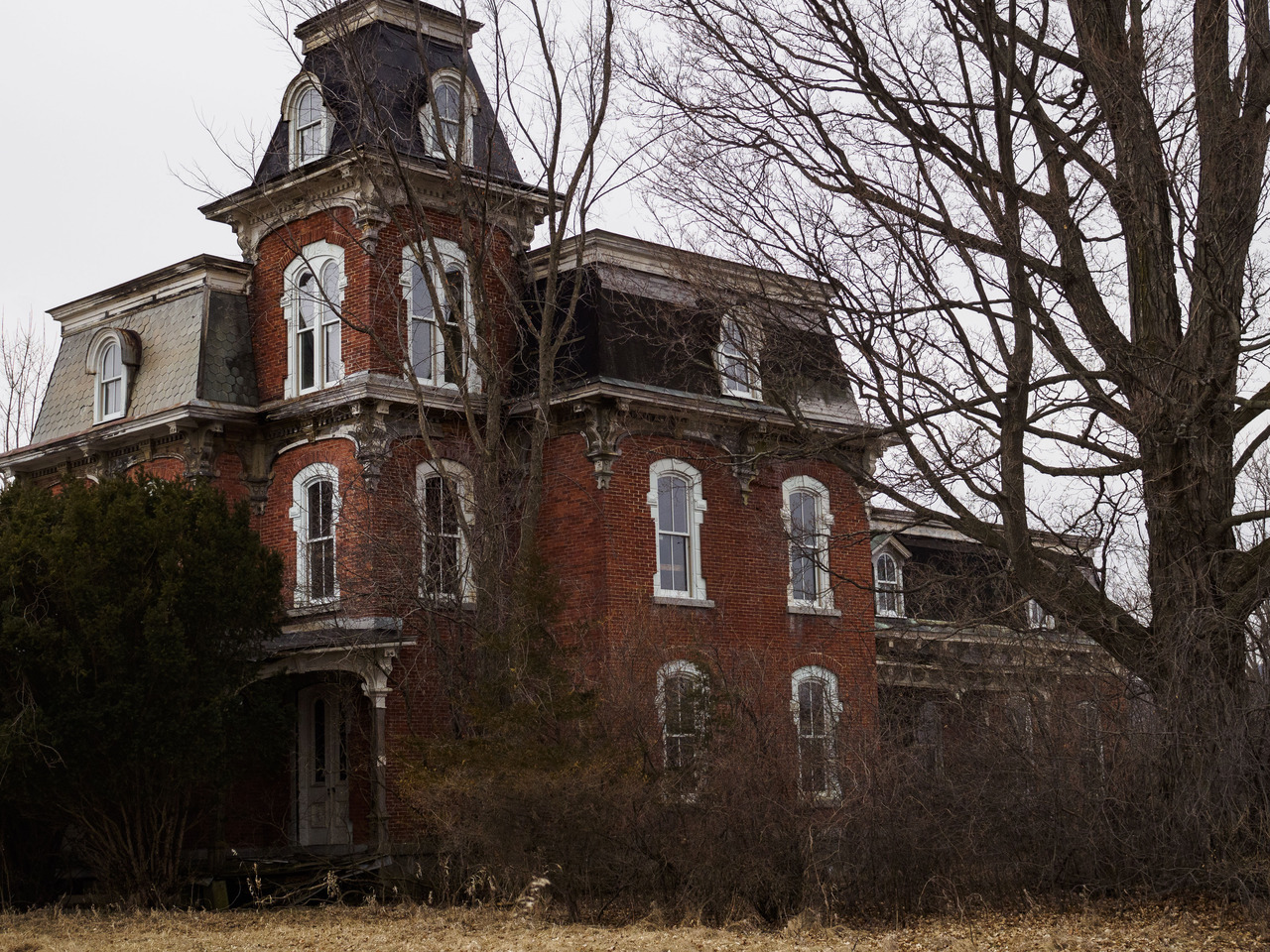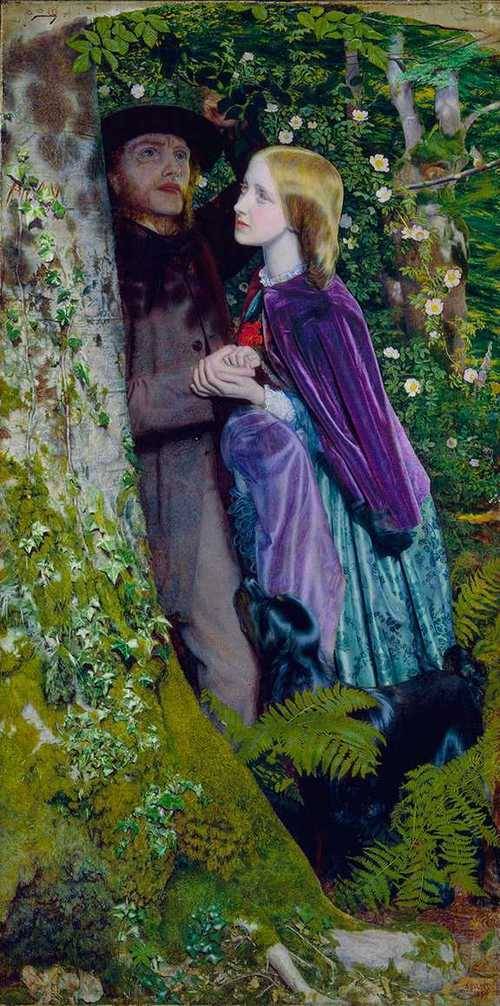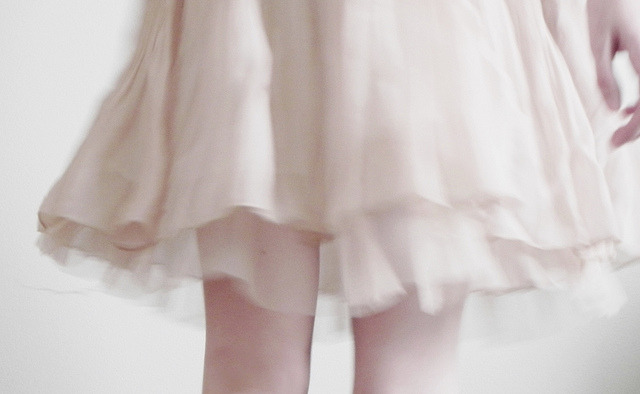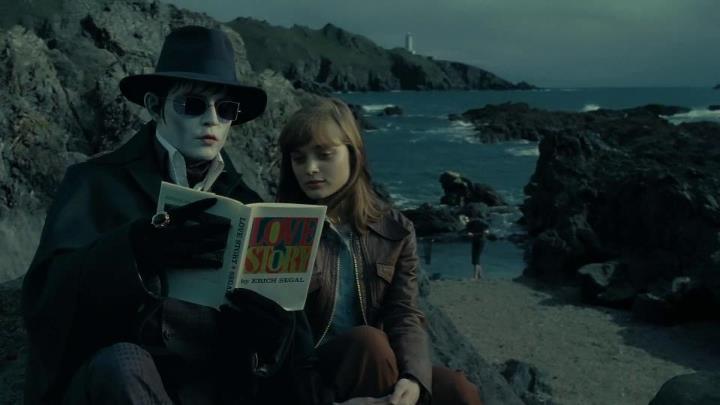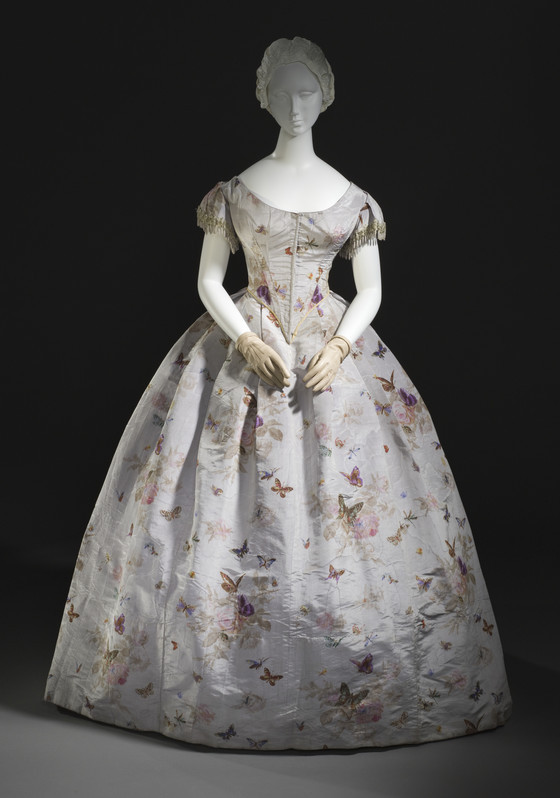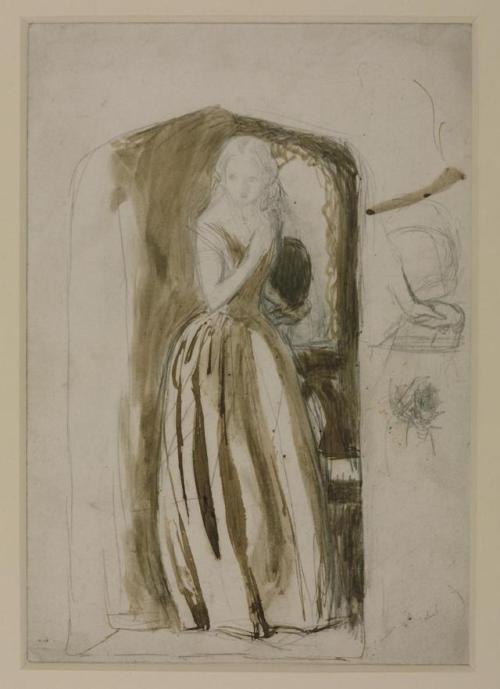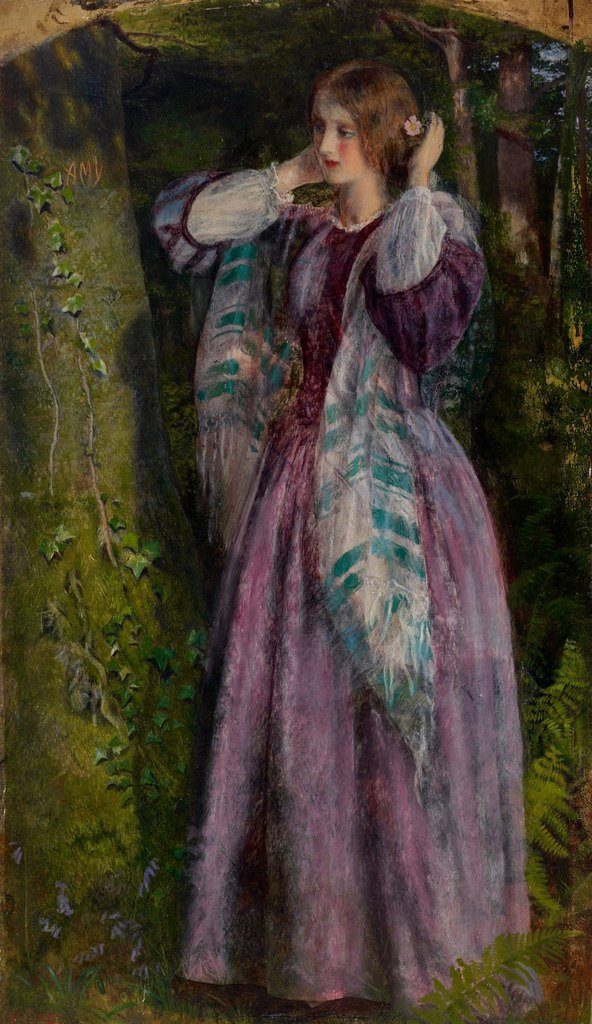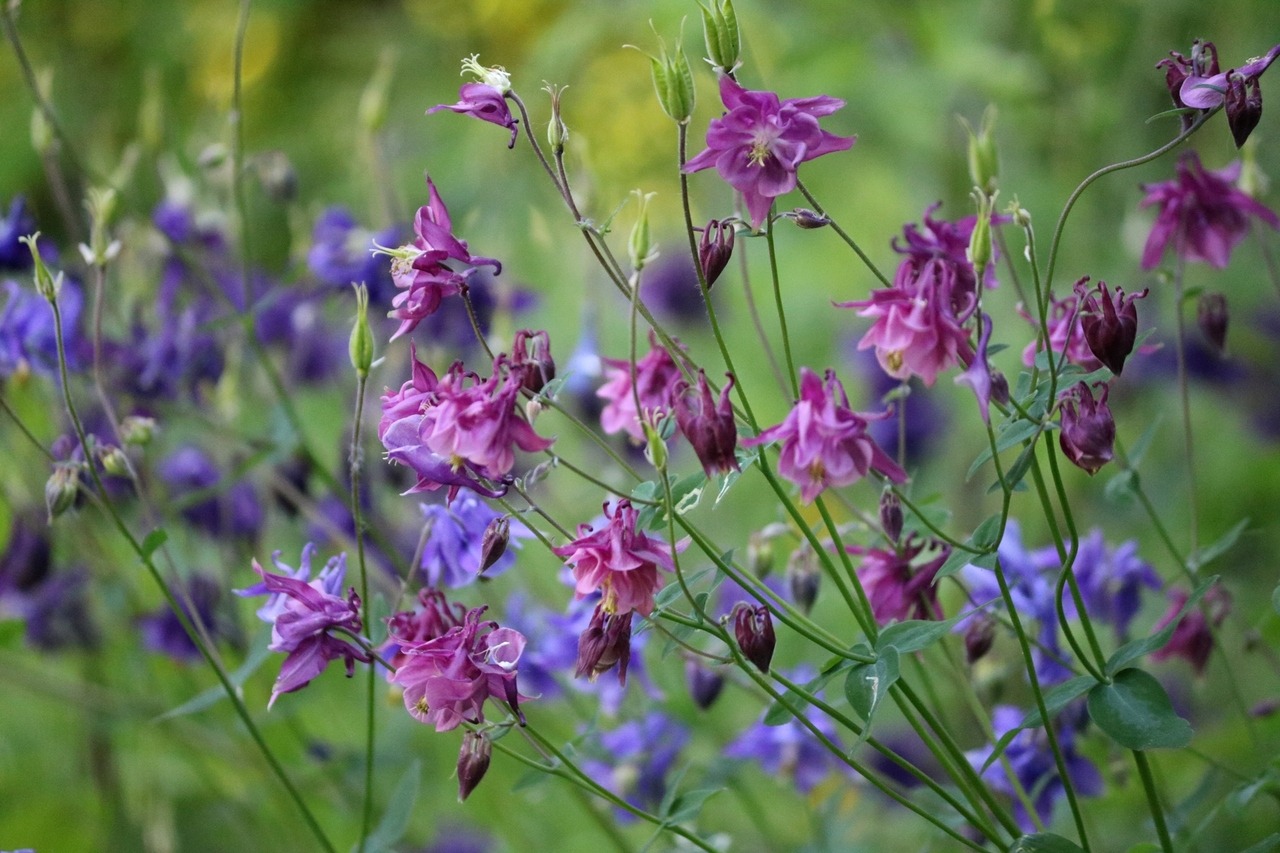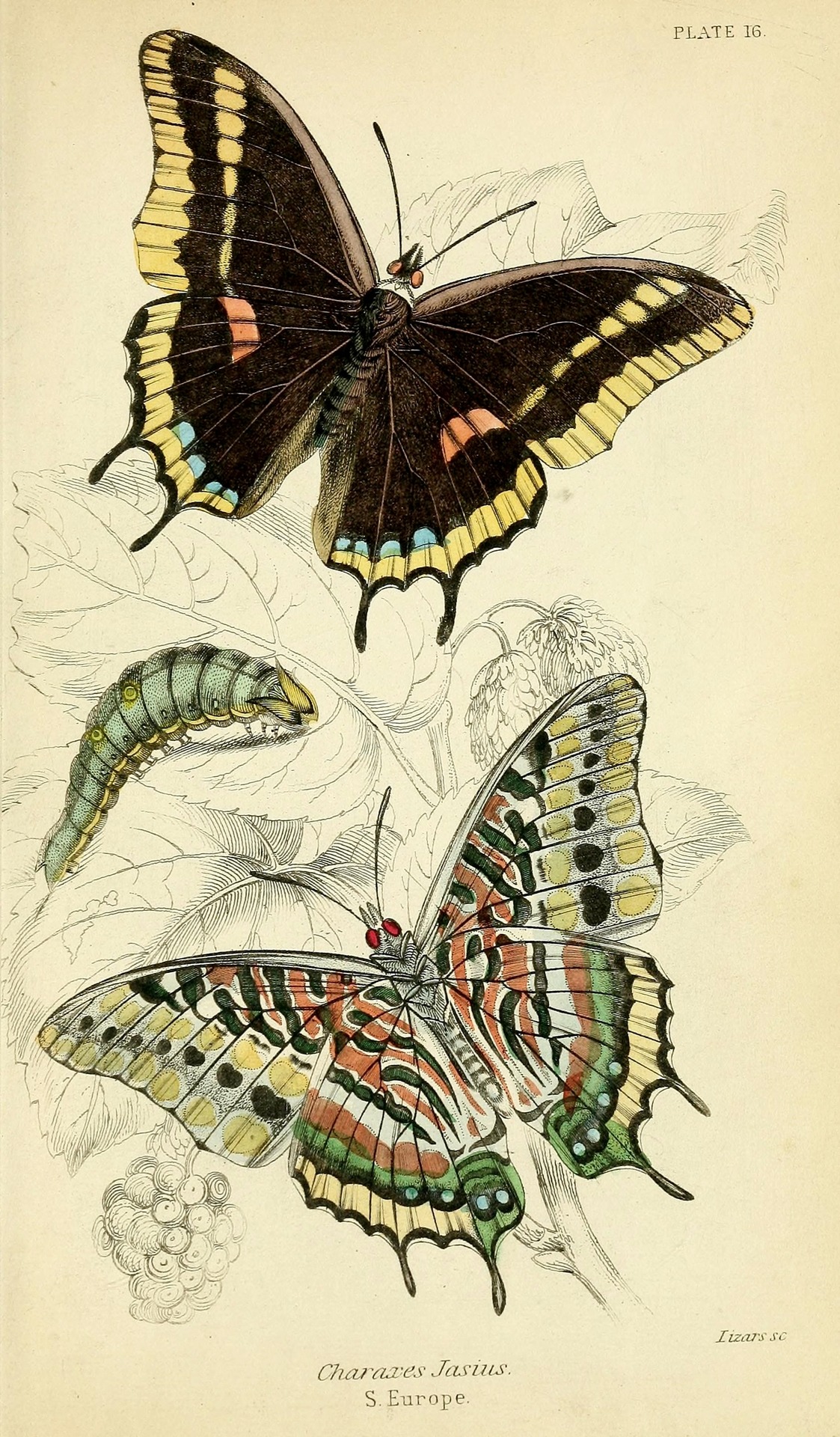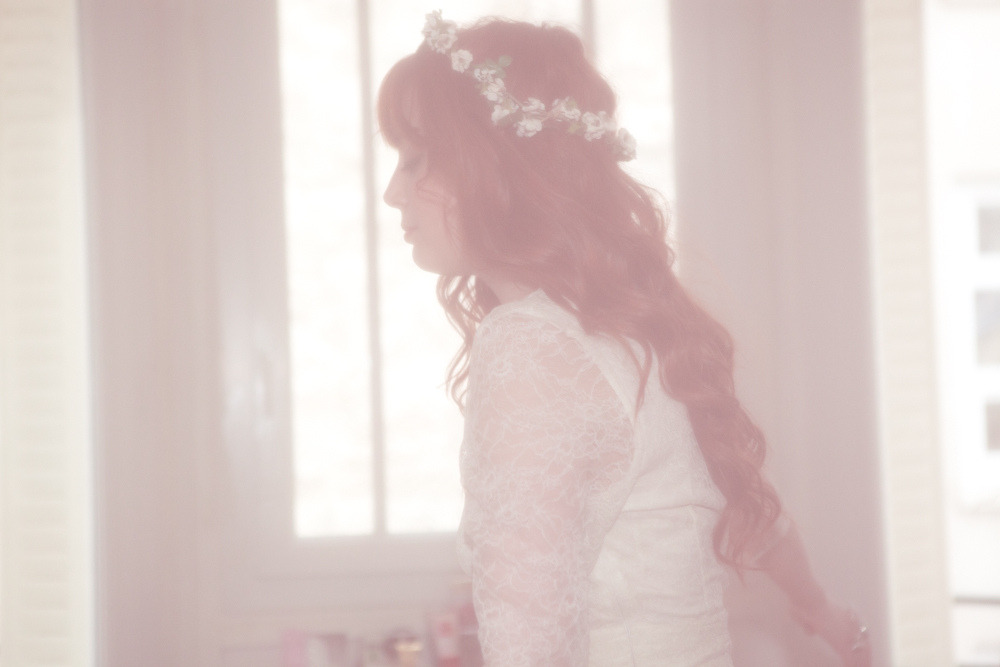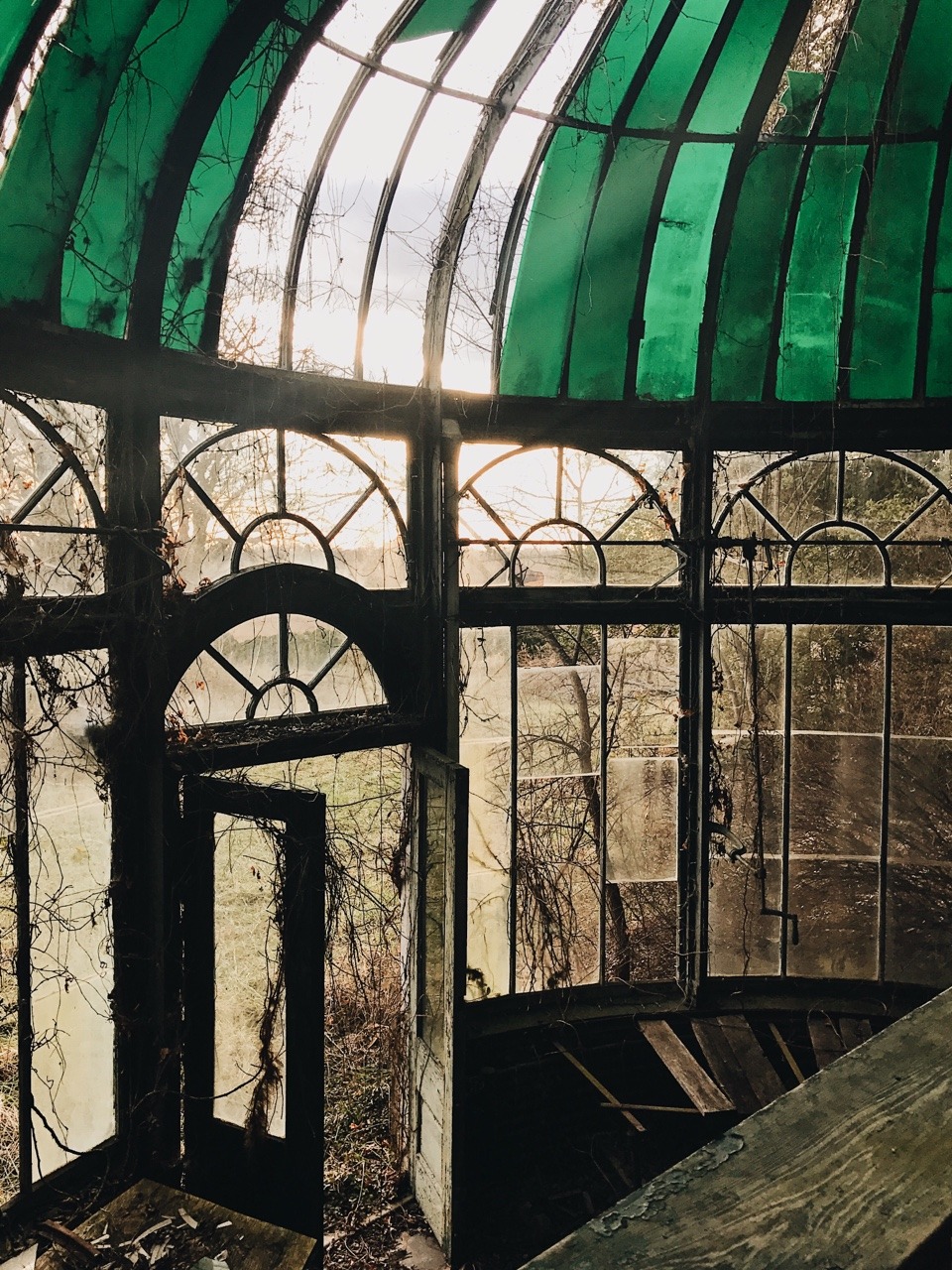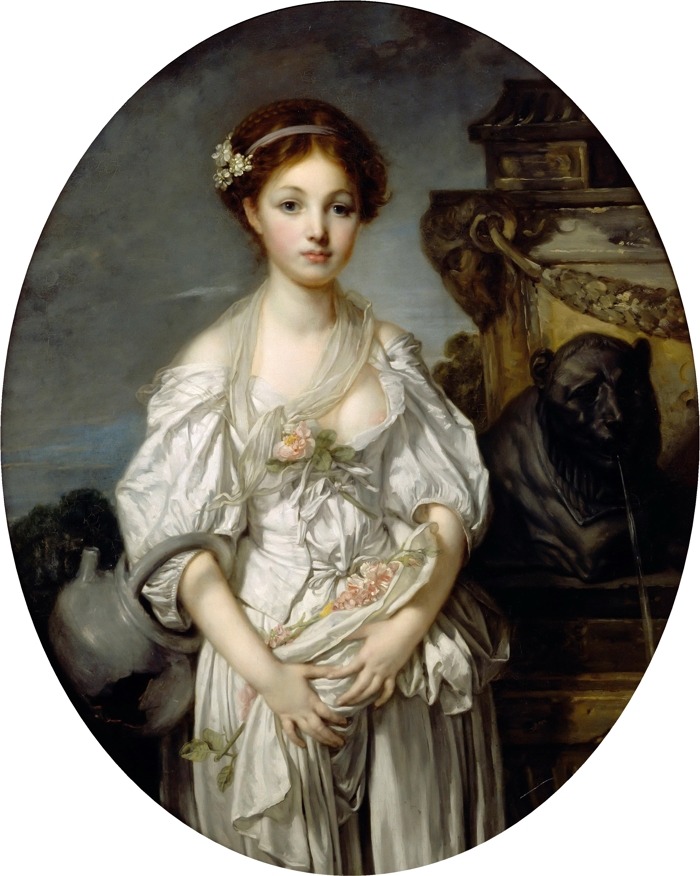In July I read a wonderful short novel “The Shrouded Woman” (La amortajada) by a Chilean author María Luisa Bombal (1910-1980) which was originally published in 1938. It was suggested to me by someone, and I am infinitely glad that I finally sat down and read it because it was a stunning book and I can now recommend it to you all! It’s short and easy to read, direct and full of feelings, but it’s truly something else, both in the matter of topic and the writing style.
 Claude Monet, Camille Monet on her deathbed, 1879
Claude Monet, Camille Monet on her deathbed, 1879
“And after it had gotten dark, her eyes opened. But just a little, very little. It was as if she wanted to look, while she was hidden behind her long eyelashes. At the flame of the tall candles that leaned over to keep watch on her, and to observe the cleanness and transparency of the border of the eye that death had not been able to cast a pall over. Respectfully dazzled, they leaned over, not knowing that She was able to see them. Because, in fact, She could both see and feel.
And that is how she looked, motionless, lying face up on the spacious bed now covered with embroidered sheets that were scented with lavender—that were always kept under lock and key—and she is wrapped in that white satin robe that always made her look so graceful.”
The story is told in the first person and the narrator is a beautiful dead woman Ana María. Despite being dead, she can still feel, think and see, and she begins by describing where she is lying and who are the people who are coming to see her for the last time. Little by little, she starts reminiscing about her life; her first love with a local boy Ricardo who both intimidated her and aroused passion in her, then her best friend Fernando who secretly adored her, and lastly she is contemplating about her disastrous marriage with Antonio. The mood of the novel feels very intimate, personal and it is very emotional as well. I think Bombal was very good at capturing the state of mind and thoughts that a deceased person might have, it just feels so accurate and convincing. Now that her life is over and nothing can be done or undone, the chances are over and desires that remain cannot be fulfilled, it’s fascinating to see where Ana María’s thoughts turn to; to love, both the possibility of joy and the agonies of love, things that could have been done differently but is now too late. She regrets being cold to her husband because her coldness distinguished his initial love for her. She regrets being left by Ricardo whom she loved with all her youthful ardour and madness.
Death can teach us so much about life. It’s interesting to note how most of us spend our day to day life thinking about trivial things, little nuisances and unimportant problems, what’s the weather like, how’s the traffic, and yet none of that truly matters. Time is wasted on trivialities. Ana María on her death bed is not thinking about the windows that she wished to clean, but, alas, death has stopped her in that! Looking at her life in retrospective she only pays attention to the most important things so why not focus on what really matters while we are still alive. Why not try and live and love since we are already alive and have no choice but to walk the earth for a little while, till eternity swallows us again. In this way, I think the novel is very inspiring. But it is also chilling in other ways and sad because the life she is telling us about is – over. But while I, as a living person, am saddened by this, Ana María is ecstatic to finally be at peace. She is not filled with sadness or anger, she is resigned to her fate and she simply contemplates things, without clinging to them. All the longings that tormented her while she was alive have now disappeared, no tears and no hatred left. She seems purified by the experience of death and is almost happy as her coffin descends into earth. And in the end, she is waiting for a real death: “She had already suffered the death of the living. Now she wanted total immersion, the second death: the death of those who are dead.”

Picture by Laura Makabresku.
I particularly enjoyed Ana María vivid memories of her childhood, her first love and her teenage days because obviously I can relate to that. And now the quotes:
“Since then, I lived waiting for the arrival of my tears. I waited for them like one waits for a storm on the hottest days of summer. And harsh word, a look that was too sweet, was enough for me to open the floodgate of tears.”
“Now that it was spring, I hung my hammock between two hazel nut trees. I laid there for hours and hours. I did not know why the landscape, the things around me, all gave me so much pleasure, the enjoyment of feeling peaceful with the rising and falling dark mass of the forest quietly rising above the horizon like a monstrous wave about to rush forward, the flight of the doves whose coming and going made moving shadows on the book over my knees; the intermittent song of the sawmill—that sharp note, sharp and sweet like the buzzing of a beehive—that filled the air all the way to the houses while the afternoon was very translucent.”

“I was overwhelmed by the wild carnation odor of your kiss.”
“One impulse swallowed another. Soon I was longing to knit yellow wool and yearning for a field of sunflowers that I could enjoy looking at hour after hour.
Oh, to be able to sink my eyes into something yellow!
That is the way I was living, greedy for fragrances, for colors, for flavors.”
“That wind! The plaits of my hair were torn apart and began to curl around your neck. We had suddenly been swallowed up by the darkness and the silence, the eternal darkness and silence of the forest.”
“And she suddenly feels that she is now without even a single wrinkle, more pale, and beautiful than ever.”
“The sound of rain on the trees and the house soon causes her very to surrender herself, body and soul, to that feeling of well-being and melancholy into which the sound of rain always filled her on those long autumn nights.”
“Everyone was upset by the indifference with which I took my first communion. … To me God seemed so distant, and so severe.”
Ana María’s vision of heaven when she was a child which horrified the priest:
“I would like it to be the same as earth is. I would like it to be like the farm in the spring, when all the rose bushes are flowering, and all the fields are green, and you can hear the cooing of doves during the afternoon… And I would especially like something there wasn’t on the farm: …I would like it if there were little deer that were not afraid and would come to eat out of my hand… And I would also like it if my cousin Ricardo was always with me, and they would give us permission to spend the night in the woods, there where the grass is as soft as velvet, right on the edge of the stream…”
Tags: 1938, book, book review, book set in 1960s, Chile, Chilean author, dead woman, La amortajada, Literature, Maria Luisa Bombal, reminiscing, The Shrouded Woman
 Pic found here.
Pic found here.





